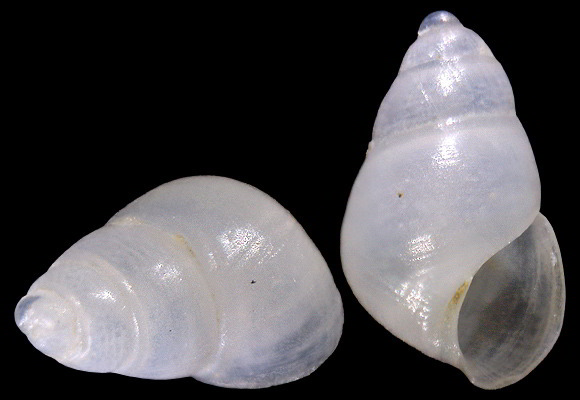
Arctic to Mediterranean. Ectoparasit on Bivalvia such as Aequipecten opercularis or Pecten maximus (« usually on the ears »), Mytilus edulis, Mytilus galloprovincialis, Ostrea edulis, as well as to Turritella communis. Depth range: 10-120m (Cordeiro & al., 2015), but also in intertidal level (see below). Last whorl is 70% of total shell height; prosocline growth lines; columellar fold placed above the median part of the aperture, (« plicâ dentiformi labii interioris in medio. » – S. Hanley) and not always visible in young specimens.
Basionym: Odostomia eulimoides. Synonyms: crassa, dubia, notata, novegradensis, oscitans… Subadult washed ashore, Málaga, Andalucia, S. Spain. 1,8mm.
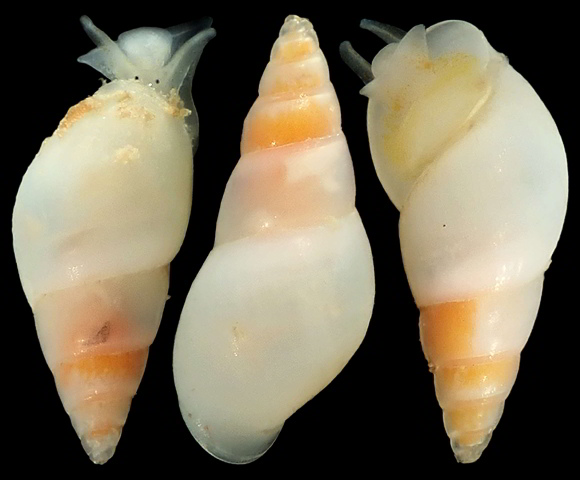
« Testa tenui; turrito-conica; subvitrea, nitida; anfractibus convexiusculis; apertura ovata, tertiam totius longitudinis partem superante; dente parvo. […] Molto frequente sul Pecten Jacobaeus a Novegradi e sempre vivente. » – O. novegradensis in S. Brusina: “Conchiglie dalmate inedite”, Verhandlungen der Kaiserlich-königlichen Zoologisch-botanisch Gesellschaft in Wien vol. XV, Wien 1865, p.21.
20-25m deep, on P. jacobaeus, Zadar area, Croatia. 5,5-6mm.
Shell translucent; animal white; intestine orange.
Original pictures provided by A. Petani (HR).
– (CC BY-NC-SA) –
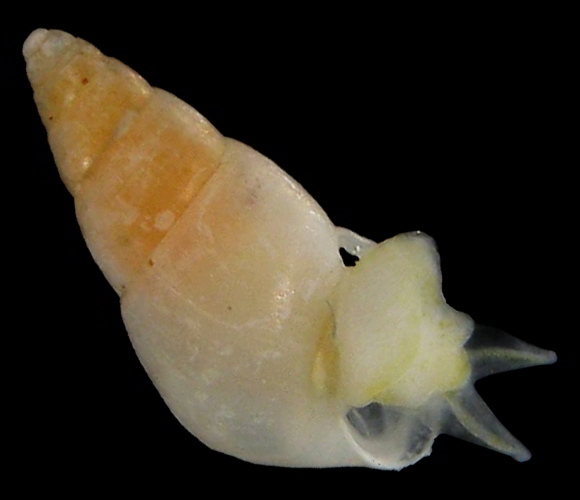
« Once I found this species in the tidal zone, among young mussels at Kolovare Beach, Zadar; in 30cm², there were about fifty specimens. » – Above: one of these specimens from the mussel bed. 4,3mm.
Comment and original picture provided by A. Petani (HR).
– (CC BY-NC-SA) –
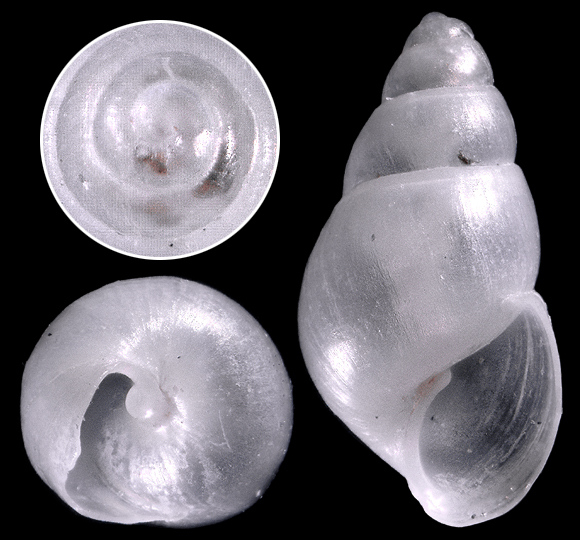
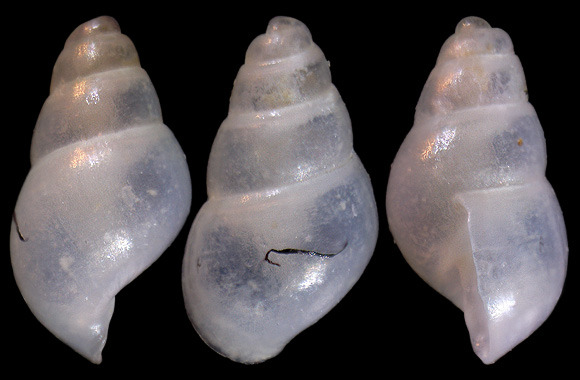
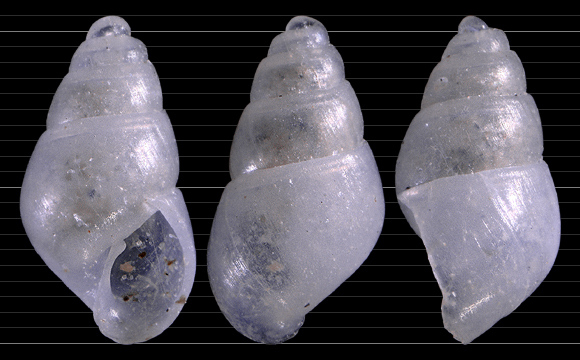
• Clear tooth on the columella?
• Yes then: no marked spiral ribs?
• Yes, then: inside of the lip devoid of teeth?
• Yes, then: protoconch type B or C (here B)?
• Yes, then: growth lines prosocline?
• Yes, then: shell with a subsutural incision at the first adapical third of each whorl?
• No, then: shell broadly conical, or more rissoid?
• Rissoid shape, then: shell very small with canaliculated suture?
• No, then: shell spherical or more oval?
• Oval, then: H/W ratio more than 2.1?
• No, then: Brachystomia eulimoides.
• Yes then: no marked spiral ribs?
• Yes, then: inside of the lip devoid of teeth?
• Yes, then: protoconch type B or C (here B)?
• Yes, then: growth lines prosocline?
• Yes, then: shell with a subsutural incision at the first adapical third of each whorl?
• No, then: shell broadly conical, or more rissoid?
• Rissoid shape, then: shell very small with canaliculated suture?
• No, then: shell spherical or more oval?
• Oval, then: H/W ratio more than 2.1?
• No, then: Brachystomia eulimoides.
26m deep, Punta de la Mona, east of La Herradura, Granada, Andalucia, S. Spain. 2,1mm.